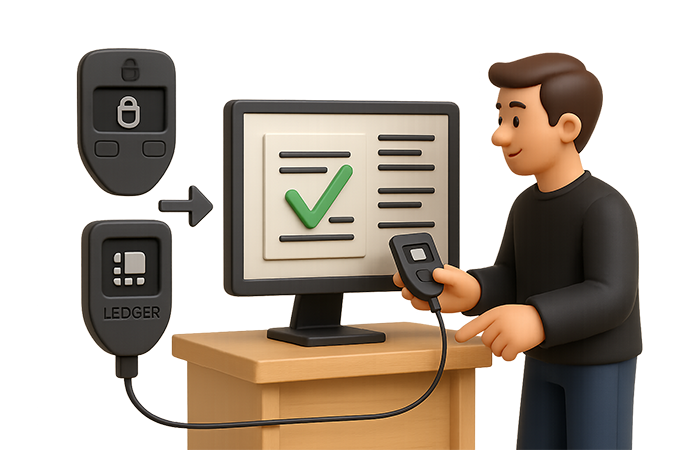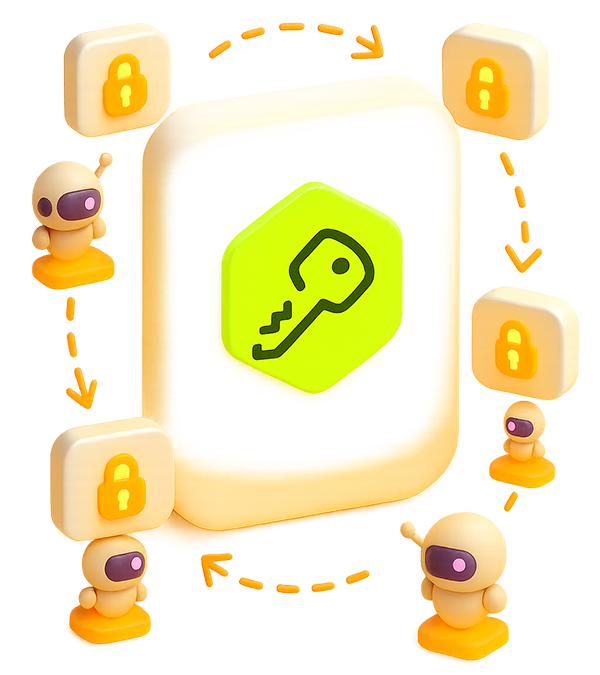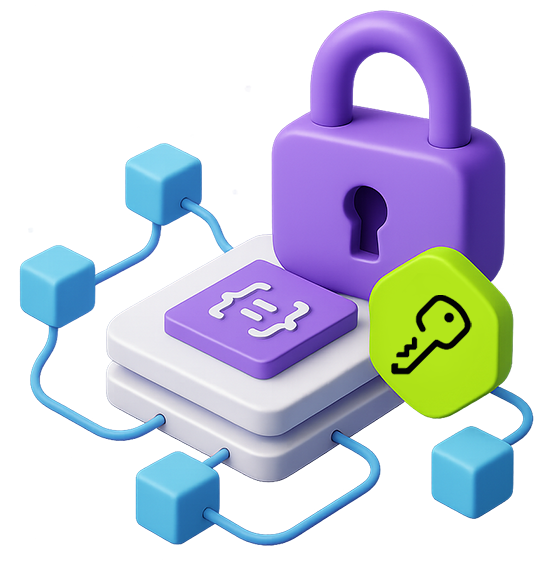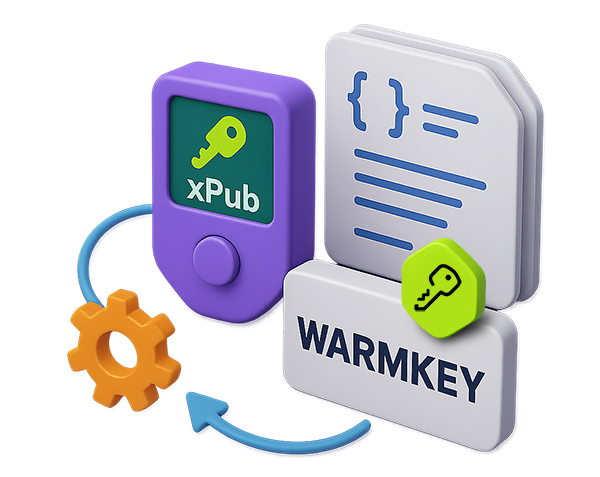1. Rising Security Threats—The Spark That Ignited WARMKEY
In the volatile world of cryptocurrency, every week seems to bring news of another hack—a drain of funds, a compromised wallet, a trust shattered. For clients managing crypto inflows, this reality is especially painful. So when one of our clients expressed their desire to integrate hardware wallet signing—using trusted devices like Trezor or Ledger—into their system, we immediately recognized the value.

Bridging the on-chain world and secure hardware meant:
- Bringing strong offline signature security into daily operations.
- Letting users receive funds via deposit addresses without exposing private keys.
- Achieving this through xPub key derivation—generating unlimited public deposit addresses safely from one extended public key. With xPub, funds remain secure even as new addresses are spun for each deposit, and each address is tied to a specific member. (lightspark.com, cryptoapis.io)
That system worked brilliantly—subscriptions flowed in, deposits landed safely into member-controlled paths—until transaction consolidation became a headache.
2. The Pain Point: Manual Mass Presses & Operational Fatigue
Soon, our client came to us with a simple ask:
What sounded like a small inconvenience revealed a deeper need: secure, yet streamlined automation for recurring operations—consolidating funds across many addresses into a master account—with minimal user friction and maximum safety.
That’s when the idea of WARMKEY began to take shape.

3. Designing Automation That’s Secure – Enter Transaction Schemas
Concerns understandably surfaced early:
We built WARMKEY with security at the core. Every transaction is validated against a predefined JSON schema—a rulebook dictating exactly which transactions are permissible.
You can find the schema here:
https:/www.warmkey.finance/files/payment/tx_schema.json
This approach enables:
- Verified, rule-based transactions—no arbitrary or malicious payloads slipped under the radar.
- Easy auditability—every signed transaction is checked against the schema before being dispatched.
- Developer transparency and user confidence—everyone can see the exact rules WARMKEY enforces.
Such an approach mirrors standards like ERC-7730, which uses JSON schemas to make complex contract actions understandable and safer. (ethglobal.com)
4. Securing the Smart Contract Layer: Permissionless, Yet Safe
In addition to the schema-level validation, WARMKEY protects operations with more on-chain guardrails.
Take the depositFundOut(...) function in our smart contract:
- It consolidates multiple deposits and automatically transfers to a preset beneficiary.
- This ensures that even if someone tries to tamper with automation, funds always go where they must—and never elsewhere.
- Malicious actors end up wasting gas, unable to reroute funds—adding friction to attack attempts and increasing security.

5. WARMKEY: A Solution That Redefines Crypto Payment Automation
Putting it all together, WARMKEY emerged from a sequence of practical frustrations and high-stakes security needs:
- Hardware wallet signing + xPub-based deposit generation → secure, scalable transaction intake.
- Operational fatigue → need to automate consolidation securely.
- Client fears about blind automation → solution: JSON schemas prescribing exact transaction behavior.
- On-chain enforcement → smart contract logic ensures finality and protection even under adversarial conditions.
Summary: WARMKEY’s Origin in One Snapshot
| Challenge | WARMKEY’s Response |
|---|---|
| Frequent crypto hacks | Hardware wallet integration with secure xPub logic |
| Hardware wallet integration with secure xPub logic | Automated deposit address derivation via xPub |
| Manual consolidation pain | Auto-consolidation with minimal user action |
| Automation security concerns | Transaction JSON schema validation |
| On-chain tampering risk | Smart contract enforces preset beneficiary flow |
Final Thought
WARMKEY was born from the desire to combine the best of both worlds: the security of hardware-based custody and the efficiency of automated workflows—without compromising on safety. Through thoughtfully applied design—from xPub use to JSON schema governance to robust smart contract checks—WARMKEY empowers users to manage payments securely, effortlessly, and confidently.

